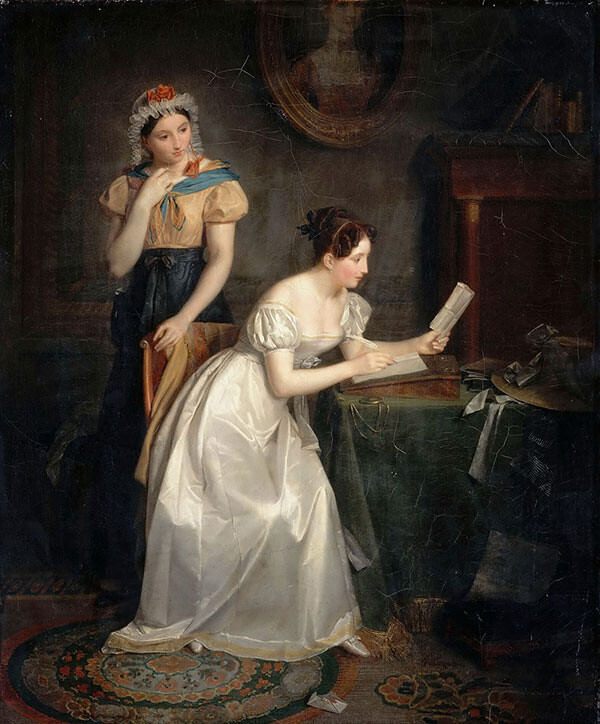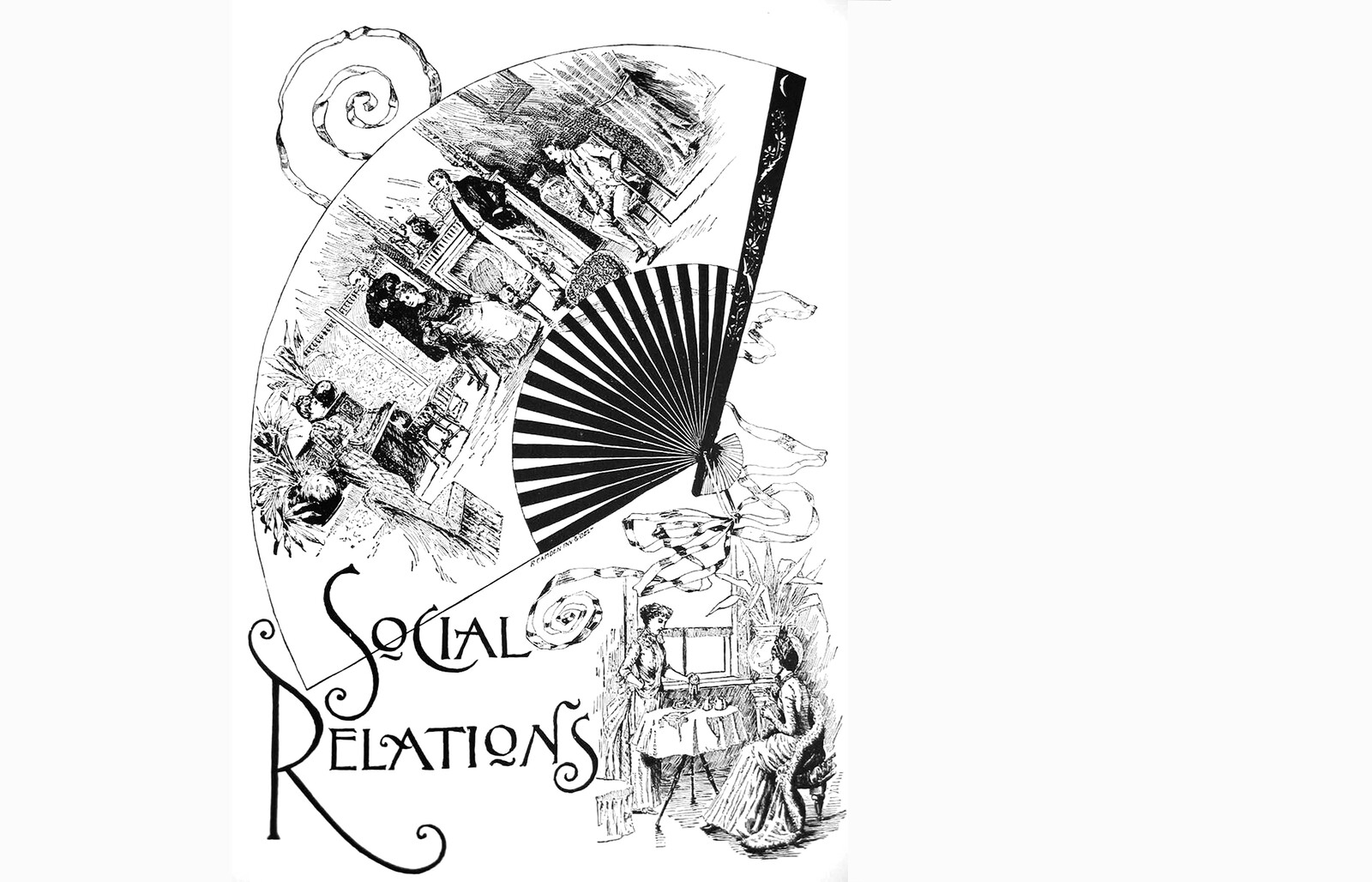Affect is the new Trauma.
—Lauren Berlant (or her “bitchy colleague”)
If affect is the process by which emotions become embodied, it’s worth asking why everyone is being so nice. “Nice”? Here’s Webster:
giving pleasure or joy: good and enjoyable
: attractive or of good quality
: kind, polite, and friendly
We don’t imagine that an always-sunny side of human nature is emerging because things are going so well; unless you are part of the so-called 1 percent, things are probably not going so well for you. (I am talking about most, but certainly not all, high-wage, highly industrialized countries.) The development of data-based, or knowledge-based, post-industrial economies (“post-Fordism”) has brought the end of stable jobs, secured by contracts, with a living wage, a future, and the promise of a reasonable pension upon retirement. (You already know this.) We work, in great numbers, for mostly low wages in the knowledge economy. Even if you are not participating in the “gig” end of it, via, e.g., Mechanical Turk, Task Rabbit, Uber, then surely you work gratis for social media, for purposes of friendship and work-related networks, and in no small part for professional self-promotion. The art world—and journalism, and who knows what other fields—has imposed a “24/7” workday on its professional workforce, and not only at the lowest levels, as I discuss below. Service work (food service, cleaning, bellhopping, and the like) and retail jobs, in addition to imposing ever-greater insecurity and uncertain work schedules on people, place them further down in the social pecking order. Being obsequious, even servile, to cadge a tip? Chatting you up like an Uber driver, to get good online “feedback” for pleasantness/niceness? Every transaction must be rated! Is such behavior really nice?
The social pressure to be nice goes far deeper than an imperative for good neighborly relations. It speaks to a demand, in neoliberal economies, for the wholesale invention, performance, and perpetual grooming of a transactional “self.”1 “Really nice” really means “frictionless,” or “low transaction cost.” A basic tenet of neoliberalism was famously expressed as “There is no such thing as society.”2 This means you are fully responsible for all outcomes, whether in respect to illness, job success, or friendship. So the Republican-right has demanded “bootstrapism”: people need to take personal responsibility by relinquishing any claim to government assistance. UK right-wingers decried government programs as the “nanny state.” In an echo of nineteenth-century Social Darwinism, aid to the poor was held to damage their moral health and the good of society (arguably, the “race”).3 But the concept of the common good was simultaneously abolished well beyond the dividing wedge of “the undeserving poor” to everyone outside certain elevated sectors. This responsibility is sold as freedom—freedom from bondage, but also freedom from unwanted obligations. The so-called millennial generation has grown up understanding that each person is responsible for creating their best-selling self and avoiding the trap of job loyalty, since no job holds out any promise of loyalty to them.
The art world is perhaps a special case. Artists—despite canned Facebook congratulations and condolences related to progeny, parents, and pets—may not be invested professionally in cultivating niceness. Some curators and many art historians (especially those with tenure?) seem to duck online niceness in favor of an archly distant dignity. (As to collectors, who knows? Their social media posts are surely restricted to those of their own class!) But much of the institutional apparatus in charge of distribution, circulation, publicity, and sales is on a long-term charm offensive. The experience economy, like the closely related caring economy, demands a public-relations approach. A very high proportion of museum and gallery staff, those who must communicate with people both inside and outside the institution, are, like the very high proportion of public-relations workers, women—a “pink-collar ghetto”—with all the prejudices that still calls forth.4


Jean-Augustin Franquelin, Response to the Letter (La Réponse à la lettre), date unknown. Oil on canvas. Louvre Museum.
In the experience economy, a primary mission of museums has become the promise not of cultivation and contemplation but rather edification and amazement, for visitors from toddlers to the elderly and for people of every social class.5 The experience economy demands authenticity, which axiomatically takes shape as heightened faux emotion. Like public relations happytalk, museums and galleries are publicly thrilled, excited, and delighted; as my friend Tim Porges once offhandedly quipped, being thrilled is the main business of the art world. As on Facebook, there is no Dislike button (though there is now an “angry” one, a sad one, a laughing one, an amazed one).
Art-world business communications, mostly as emails between museums, galleries, and artists, show more limited tropes, neither casual nor quite formal, located in a linguistic space not recently (or ever) inhabited, and generally confined to strangely elaborated greetings and salutations. In these work documents, a now-common formula after the still-formal “Dear,” is “I hope this message finds you well,”6 an intrusion into the personal that is both empty and confusing, and no more meaningful than an air kiss. This vague bodily invocation is an imaginary throwback to a Victorian epistolary mode, signifying, one imagines, not courtesy but courtliness. In a more colloquial register, standard signoffs are amped up so that “Best wishes” swells to “All best wishes,” and “Have a nice day”7 to “Have a great day!” and so on. This stems more from shop-assistant culture than from Victorian letter writing but has most decisively replaced formal closings.8 9
An English friend of mine airily waved all this happytalk away as “Gallerina behavior: they think it sounds posh”—well maybe, to an English person, but I think to most of us in the US it sounds strangely stilted, like a distant echo from some other, fabled time. But her remark reminds me that courtliness ineluctably points to the ranks of subordinates trapped by the whimsies of the Top Dog. It is not for nothing that the art world has been likened to the nobility, a group captive to royalty and haut-bourgeois elites, and perhaps even semi-starved, but presumably retaining hope and aspiration toward favor and access. Ambition, access, bankable information, flattery, gossip, infighting, competitiveness, in both manners and physical display … all figure in the production of a set of deep-bowing courtiers who hope they may gain entry to the inner sanctum from their acknowledged positions in the outer reaches of the court or worse, the scullery. The rise in courtliness is consistent with gentrification. Amidst the explosion of wealth for the land-owning class, currying favor is the usual behavior of the propertyless in a kingdom where land is the most valuable thing. This geographic value-regime has its echo, as Fredric Jameson reminds us, in the commanding figure of the Curator; who is hired to distribute the exhibition’s valuable real estate.10


Wilhelm Amberg, The Maid, 1862. Oil on canvas
The Court of Art, with its primarily female adherents, is understood to be outside a five-day, thirty-five- or forty-hour work week (mandatory for salaried employees in most countries); its underpaid, overburdened members fill the work week as close as they can manage to “on call and working all the time.”11
When young lawyers began doing this two or three decades ago, it was in the interest of rapid promotion to law partner and the resultant pots of money; in the art world, as in other fields, such overwork is often required just to stay in place; blame job insecurity, then, and those neoliberal personality strictures, when curatorial assistants write to you on a weekend evening. But there has to be a felt attachment to courtier behaviors or the system falls into crisis.12
Some of our uncertainty about self-presentation surely stems from the fact that so much of our communication takes place in the “disembodied” space of online text, often with people we don’t know, and without the buffers that introductions by intermediaries—people known to both parties—often provide. Online communications rob us of the “superfix,” or performative slant, to an utterance—a powerful part of verbal interaction. What we might call the skewed utterance—including humor, skepticism, irony, sarcasm—is seriously damaged when there is no face, body, or voice to convey those shaded meanings.13 Yet these elements figure greatly in modeled behavior on television and in the movies, and in much of public life. (Skype partly fills this expressive gap of online communication.) The emoticon or emoji and the lowly exclamation point, not to mention the simple LOL, have attached themselves to our words, to reassure ourselves and our readers. But both such shaded communications (especially sarcasm) and the signs of reassurance are often inappropriate in business dealings, inducing the anxiety that our emails may be misread; hence the anxiety-ridden formulaic greetings of joy! glee! and full engagement!


Title page of Grammar of Ornament (1856) by Owen Jones.
The trappings of “caring”—the feminine practices banished from the state—have been tactically adopted by the corporate world.14 Every service-oriented exchange, including those with online “bots” and faraway call-center employees, is meant to enfold you in cozy, infantilizing warmth, while every corporate employee, real and fake, is open to “feedback” and evaluation on those grounds.15 The entire tech economy boasts of its identity as some post-hippie countercultural space, familiar to us now as visionary and disruptive of corporate business-as-usual. But this leading “new economy” has been observed, like our false friends, to deploy the same old predatory business practices, rebranded with “dreamy, sentimental stories of new-corporate idealism, a belief in the defining heroism of creative innovation,” in the words of journalist Nathan Heller.16 Heller, via scholar Fred Turner, traces this to the “collaborative culture of Cold War research” and thus it is not much more than old wine in new bottles.17


Johannes Vermeer, Lady with Her Maidservant Holding a Letter, c. 1666-1667. Oil on Canvas Photo: Wikimedia Commons.
But from a more materialist, labor-oriented, productivist, and political perspective, this era has indeed been marked, according to Luc Boltanski and Eve Chiapello’s account in The New Spirit of Capitalism,18 by a radical rupture after May ’68, centering on the move from industrial capitalism to an economy based on freely mobile global capital, and a relatively immobile work force.19 Population flows have dramatically increased, of course, with millions fleeing economic collapse, displacement, exploitation, and conflict, becoming refugees or migrant workers from many classes of labor—both legal and illegal—but these groups cannot expect “open borders” in the manner of capital.
The art world has, also, after the 1960s, entered into this globalizing economy, and artists are often itinerant workers following the floating institutions and demands of capital. When we complain about the nightmare of the art world as driven by the market and its increasingly institutionalized and rigidified paths to “success,” we should remember we often participate in it, and its searingly alienating search for a competitive advantage, with hardly a thought on how that resonates on every level. It is time to say: “no more Mr. Nice Guy.”
Mr. Nice Guy:
a man who treats people kindly: a nice man—used chiefly in the phrase no more Mr. Nice Guy
I’m tired of the way they treat me. From now on, no more Mr. Nice Guy!
(I’m not going to be nice to them from now on)20
An offshoot is the conviction that a person’s first obligation is to take very good care of his or her body, a conviction expressed at all spots along the political spectrum. There is an extensive literature on the swindle of coaching programs that promise to help often-desperate people—often middle-aged women looking for jobs—produce their best, most marketable self; see, for example, Barbara Ehrenreich’s Bright-Sided: How Positive Thinking Is Undermining America (New York: Picador, 2010).
Margaret Thatcher’s famous remark to Woman’s Own magazine was “There are individual men and women and there are families … There is no such thing as society” →.
What was underway, of course, was a redistribution of social wealth from poor to rich and the relaxation of business regulations and taxes.
See Jennifer Pan in Jacobin magazine for public-relations workers, who evoke scorn from virtually everyone outside it: →.
The reasons for the changes in the social function of museums are too complex for me to address here, though I have done so in various place elsewhere. Fredric Jameson, in his recent, wide-ranging article “The Aesthetics of Singularity,” in NLR 92 (March–April 2015), refers to the museum as having been transformed into a “popular and mass-cultural space, visited by enthusiastic crowds and advertising its new exhibitions as commercial attractions” (107–8).
Some have suggested that the prevalence of illness and death in the nineteenth-century West meant it was not unreasonable to offer the hope that nothing untoward had happened between the sending of a letter and its receipt.
Itself an early sign of the era of enforced cheerfulness, debuting in the early 1970s.
See Maeve Maddox, “Yours faithfully or Yours sincerely?” Daily Writing Tips, for a pocket history of accepted US and UK letter closings →.
The vocabulary of American English, not to mention International English, seems to be shrinking drastically and sinking toward childhood phraseology: mean to convey actively unpleasant or unkind; huge to convey large; amazing to mean good; incredible to mean very good or excellent; and to dislike something is to hate it, to like it is to love it, and so on—while to express approval in groups, applause has been replaced by hooting, especially it seems on the part of women.
Jameson, “The Aesthetics of Singularity.”
There is no space here to explore the pressure on non-managerial workers to put in longer hours without receiving overtime pay. This dilemma has been partially addressed by the US Department of Labor’s recent extension of overtime pay rules under the Fair Labor Standards Act. See Fran Sussner Rodgers, “Who Owns Your Overtime?” New York Times, June 22, 2015 →: “The update … will affect millions of salaried employees. In 1975, the last year the threshold was significantly raised, 60 percent of salaried workers fell within the requirement for overtime pay. Today, only 8 percent do … Employees in the United States currently work more hours than workers in any of the world’s 10 largest economies except Russia (though we don’t have good data for China) … When everything over 40 hours is free to the employer, the temptation to demand more is almost irresistible. But for most employees, the ones exempt from overtime rules, their managers have little incentive to look for ways to use their time more efficiently.” More dubious—the article was written by a business consultant—is Rodgers’s assertion that “it’s not just a question of getting paid fairly for every hour you work. It’s about using the time well … an overwhelming majority of employees do not resent spending time that is clearly directed toward customers or the success of the enterprise.”
Artists must retain some faith in the gallery system even if cynical about its behaviors.
For a humorous take of what the automation of the affective labor performed in e-mail writing might look like, see the Gmail app Emotional Labor by Joanne Mcneil. On the app’s website the copy reads “Lighten up your email with the Emotional Labor extension. Works on any email sent through Gmail (…) Then click the smiley face to brighten up the tone of the email before sending.”
The corporation may adopt some maternal slant in its transactions, but a firmly male identity is attached to every visionary tech “pioneer,” and ruthless business tactics (despite such slogans as Google’s “Don’t Be Evil”) are employed.
The feeling most people understandably express when asked about their “help desk” experience is inchoate rage, against which this false caring is preemptively deployed.
Nathan Heller, “Naked Launch,” New Yorker, November 25, 2013, 69. Available online →.
See Fred Turner, From Counterculture to Cyberculture: Stewart Brand, the Whole Earth Network, and the Rise of Digital Utopianism (Chicago: University of Chicago Press, 2010), which I have not read. But hippie capitalism continues, of course: see Ronda Kaysen, “The Millennial Commune,” New York Times, July 31, 2015, →, for a hilarious account of a very much post-hippie, upscale, expensive “co-living” space in downtown Manhattan called “Pure House,” and other, similar corporate ventures elsewhere, which are more like cozy, all-service dorms in a hyper-elite college than anything like the communal spaces of the Sixties and early Seventies. From the article: “Prospective residents answer probing questions like ‘What are your passions?’ and ‘Tell us your story (Excite us!)’ … promotional materials describe … a ‘highly curated community of like-minded individuals.’ In other words, they rent a room in an apartment in Williamsburg, Brooklyn, but with opportunities for social and spiritual growth, like dinner parties and meditation sessions.”
Luc Boltanski and Eve Chiapello, The New Spirit of Capitalism, (London: Verson, 2006).
Or in Badiou’s terms, the evental coming into political visibility of industrial workers.
See →

